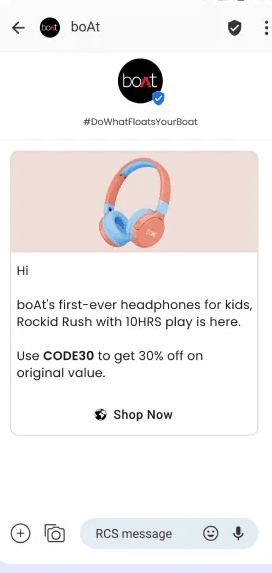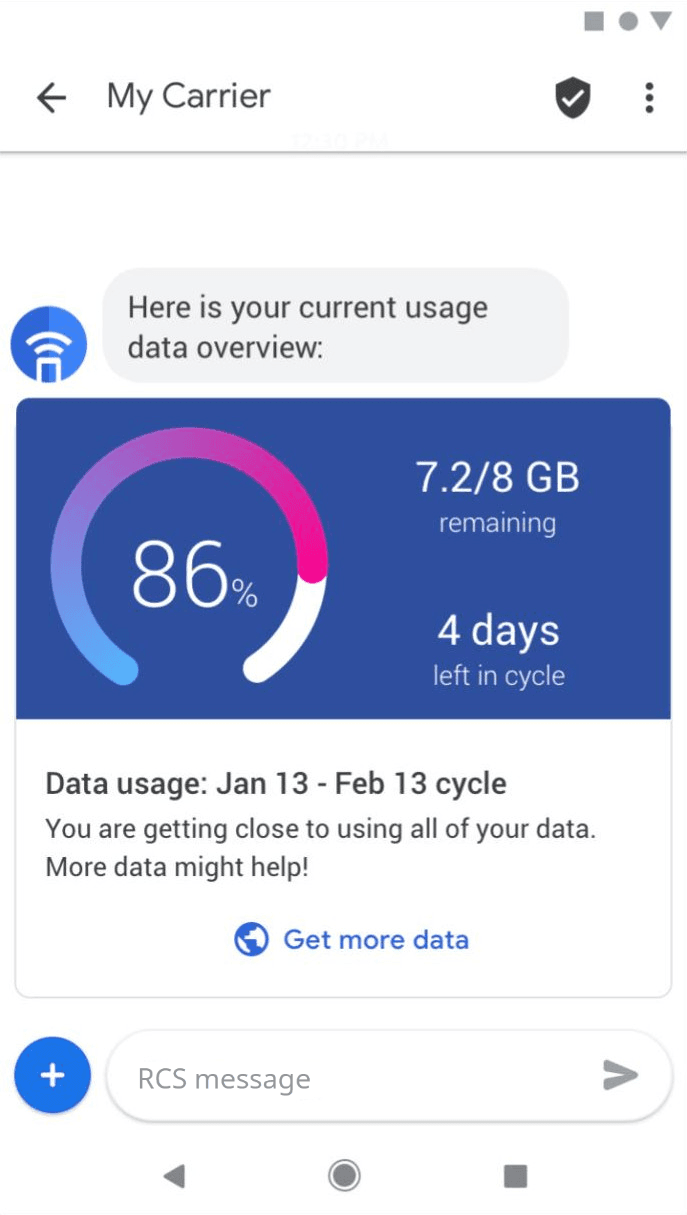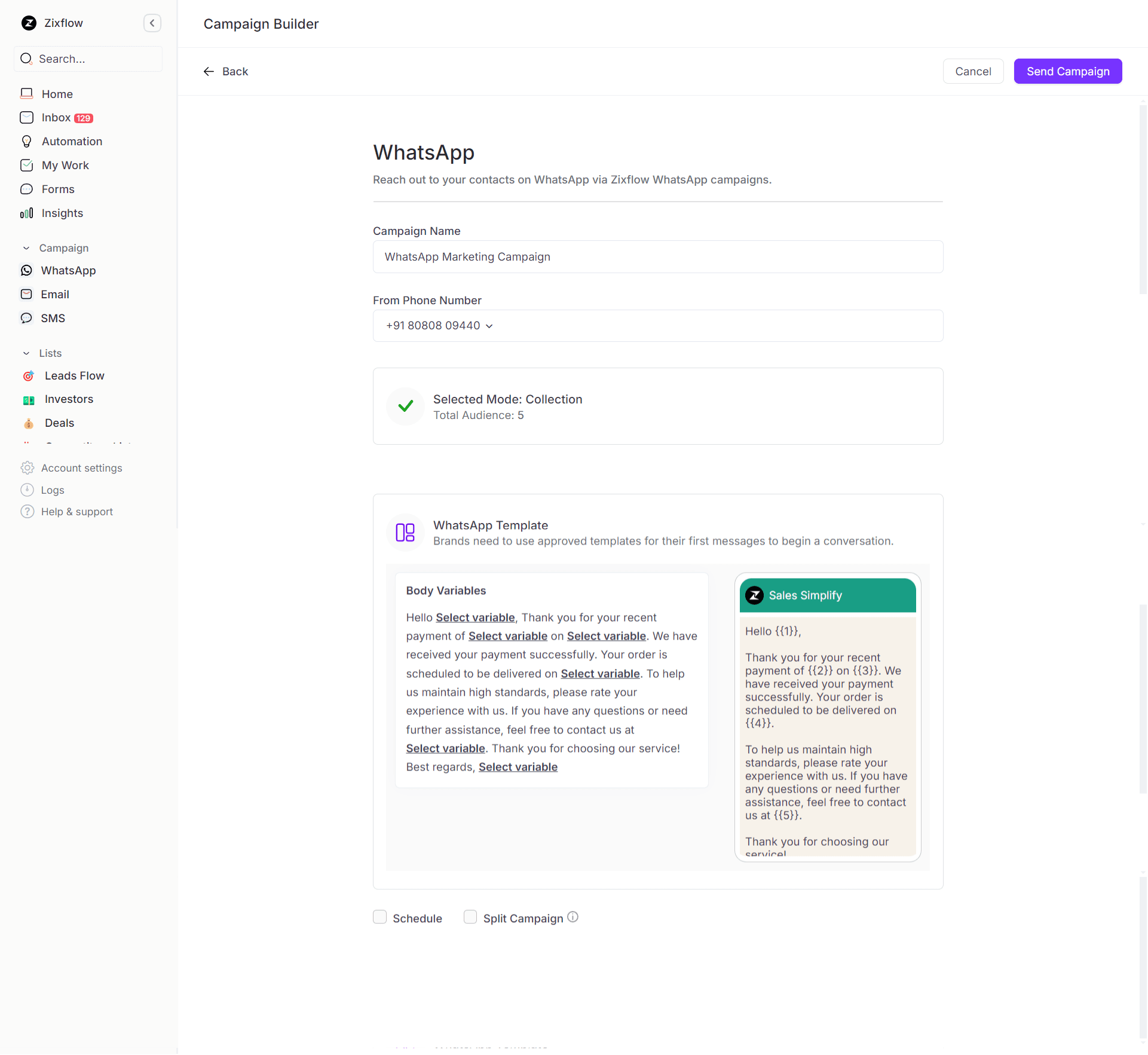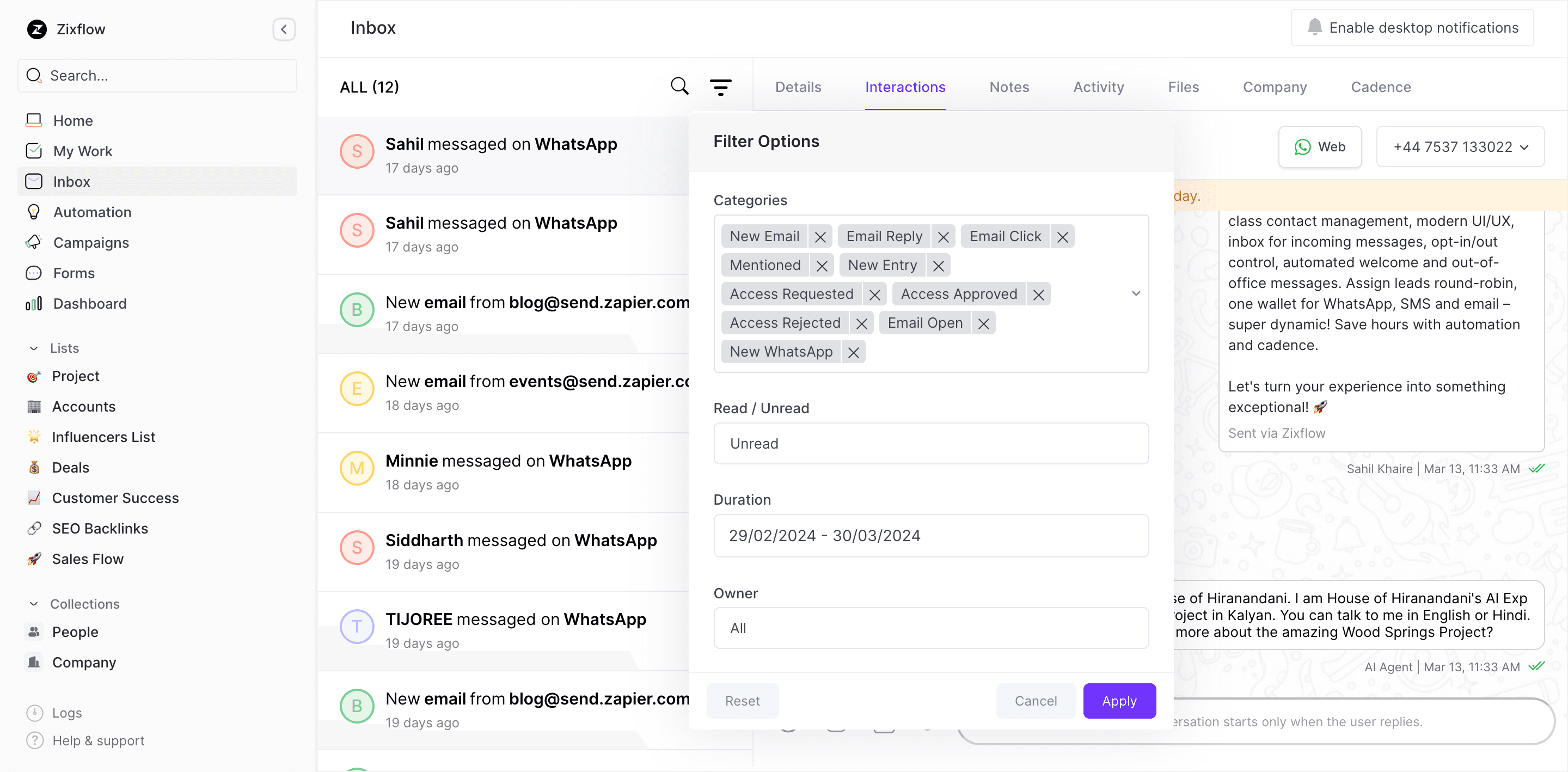RCS Business Messaging Best Practices in 2025

Adapting to a new technology can be a little unnerving and challenging for any business, particularly when it involves communicating with others. That does not mean you should stop embracing better tools to simplify your sales process or optimize your communication.
However, RCS can hardly be considered a new technology. It has been over a decade since the development of RCS started, but it was only after 2017 that it started to gain attention from telecom carriers and device manufacturers.
It was created to replace traditional messaging channels like SMS/ MMS and allow Android users to have an enhanced messaging experience, similar to what iPhone users experience with the iMessage app. Plus, Apple has recently announced that it will support RCS in its upcoming iOS 18 launch, scheduled to happen in fall 2025.
That being said, before you can consider using RCS and start making the most of this amazing messaging channel, you need to know about its ins and outs. Also, you need to be aware of what to do and the things to avoid to ensure your business doesn’t get negatively affected.
For this reason, in the blog post, I’ll explain to you some of the best practices for using RCS in 2025 to elevate your outbound engagement and enhance the way you conversate with your customers.
What is RCS Business Messaging?
Before I tell you the best practices for utilizing RCS, let’s first understand what RCS Business Messaging (RBM) is.
RBM is the transformation for basic SMS messaging to allow you to send a wide variety of messages and multimedia content without needing to download any app. It lets you run interactive messages that come with visuals, videos, actionable buttons, and product carousels to engage your customers in an attractive way.

Best practices for using RBM
Now that you know what RCS business messaging is, below are some of the ways to make sure you maximize the potential of RCS and elevate the overall engagement rates for your business.
Intuitive conversational UI
RBM is designed to offer time-efficient and interactive messages using a conversational user interface. This UI makes it easy for you to keep the conversation focused on a particular task and provide simple instructions to engage your customers like a normal, everyday conversation.
By leveraging it, you can send tailored messages to help your customers perform actionable tasks and direct the communication in the right direction by taking their requirements using interactive elements, recommended products, and using RCS to provide customer service.
Sending concise messages
Oftentimes, you might think that sending all the information to your customers will allow them to make an informed decision. And you are right. But sending too many details can also overwhelm them, hindering their ability to take action.
By making use of various types of information in the messages, you can keep the users engaged and make it easy for them to converse with you. Again, make sure that you don’t bombard them with too many messages at once.
Moreover, it’s a good practice to keep your chats brief and to the point. This way, you can make the most of the messaging capabilities of RCS to send eye-catching messages, including media-rich cards, so your customers are engaged.
Additionally, craft your messages to keep the conversation going. Don’t end your chat without encouraging your customers to perform an action. Plus, the way you create your message also plays a role in how well your chat is going to go.
For example, when talking to a customer, use a conversational tone, referring to them as “you.” Also, utilize contractions (it’s in place of it is), and don’t use too many exclamation points. For numerals, use the number instead of the word, i.e. “1,2,3” in place of “one, two, or three.”
Leverage rich media and interactive features
One of the major advantages of RCS is the fact to include rich media such as images, videos, carousels, and interactive buttons in your messages. This can significantly enhance the user experience compared to traditional SMS.
So, you should fully exploit these capabilities to create engaging and immersive customer experiences. For instance, rich media—such as images, videos, and GIFs—can transform a simple message into a compelling visual experience, capturing the customer’s attention and conveying information more effectively than text alone.

This seamless experience not only engages the customer but also reduces friction in the sales process. These features turn passive recipients into active participants, which can significantly boost conversion rates.
Don’t forget about personalization
Personalized messages have a higher chance to resonate with your customers, thereby resulting in better higher engagement rates. With RCS, you can go further than just addressing the customer by their name.
By using customer data and past conversations, you can tailor different types of RCS messages in such a way that it speaks directly to individual preferences, needs, and desires.
For example, if you have an event scheduled and you want to send tickets to registered participants, you can send a personalized message containing a digital copy of the entry pass using RCS. Additionally, you can use suggested replies to ask them for other amenities such as food, drinks, or a staying reservation.
This level of personalization increases customer’s experiences by making them feel understood and valued. And for your business, it can significantly improve open and click-through rates, allowing you to upsell or cross-sell your offerings.

Ensure compliance and security
As with any communication channel, compliance and security are non-negotiable, and RCS, like any other marketing platform, should comply with legal regulations such as GDPR, CCPA, and local communication laws that govern how customers’ data is collected, stored, and used.
So, to ensure compliance, the first thing you need to do is to stay informed about the latest regulations in the regions you operate in and implement processes to make sure that personal data is managed securely.
For instance, you need to obtain explicit consent before sending RCS messages, providing clear opt-outs, and being transparent about how you are going to use their data upfront.
Additionally, you should regularly review and update your security protocols to address emerging threats, ensuring that your communication is secured. Failure to comply with these regulations can lead to a temporary or permanent ban on your account and can harm your business’s image.
Emphasize value over quantity
At the core of any sales engagement strategy is the value you deliver to the customer. Whether you are sending a marketing message, customer support, or an information update, make sure it provides value to the conversation and clear benefit to your customer.
For example, in place of sending a generic promotional message, consider sending a tailored, exclusive discount based on the customer’s previous purchases or current interests. In case you are sending informational content, make it so that it addresses a specific need or question that your customers have and make it highly relevant to the conversation.
In addition to that, it is crucial to strike a balance between staying on top of the conversation and avoiding message fatigue. Sending too many messages to your customers, especially if they are not offering consistent value, can lead to disengagement and even opt-outs.
Encourage two-way communication
Although traditional SMS supports two-way chats, it is highly limited to just text messaging. RCS, on the other hand, allows for more versatile messaging functionalities, allowing you to have interactive, two-way communication.
Encouraging two-way communication involves more than just sending out messages with a call to action. You have to create opportunities for meaningful interactions. For example, after you deliver a product, you can send a post-sale RCS follow-up message to ask your customers to share their experience or provide feedback on the product.
This kind of engagement not only shows that you care about their opinion but also provides you valuable insights to help you improve in the future. By fostering an environment of open communication, you can build stronger relationships with your customers and establish rapport to get an increased number of sales.
Integrating RCS with other communication channels
Nowadays, customers expect a seamless and consistent experience across all touchpoints. While RCS includes robust messaging features, it can still be a part of a broader multi-channel communication strategy. Integrating RCS with other channels like WhatsApp, email, or traditional SMS can create a more cohesive customer experience.
An integrated approach ensures that your messaging is consistent across all channels, creating a unified brand experience that builds trust and loyalty.
Furthermore, integrating RCS with your CRM platform allows you to sync customer data across channels and manage your outbound communication from a single location. This means that if a customer starts a conversation via RCS but later continues it through email or phone, the context and past interactions are stored, saving you a lot of time not asking for the same details again and frustrating the customer.
To do this, you require a centralized customer engagement platform to run omnichannel outreach campaigns to deliver an all-around customer experience. A solution that allows you to achieve that is Zixflow.
Zixflow is an all-in-one engagement solution, using which you can reach out to your customers over WhatsApp, SMS, email, and RCS (coming soon). With this no-code platform, you can easily set up marketing, transactional, or informational messaging campaigns.
Being a multi-channel software, Zixflow enables you to deploy outreach campaigns across various channels promptly. Simply feed in your contact details, select a message template or type in your message, and click send for lightning-fast execution.

Sending out messages to engage your customers is the first half of a conversation. For the other half, you need to reply to their messages as well. So, having a centralized inbox is a must to collect all these incoming messages to let you respond to them promptly.
This is why, Zixflow’s Inbox lets you access every one of your incoming messages, across all the channels from a single location, eliminating the need for you to switch between numerous tabs to keep track of your chats.

Monitor the future trends of RCS
As I mentioned previously, RCS is not a new technology. It is just that its adoption and interoperability have not been the quickest in comparison to other communication channels or OTT apps. However, it is now garnering attention in the mobile communication industry, and soon, with Apple’s adoption of RCS, cross-platform messaging can take it to newer heights.
So, to ensure that your business utilizes RCS messaging’s features and capabilities, you need to stay on top of the latest developments in the RCS field to identify innovative ways to engage your customers.
Stay ahead of the curve, by following industry news, participating in relevant webinars, and attending conferences focused on RCS and business messaging. This not only helps you stay informed about future trends but also allows you to see how other businesses have successfully used it to drive growth.
Continuously optimize your strategies
Lastly, creating a marketing strategy and implementing it in real time does not mean that your work is done. A successful engagement strategy needs constant improvements and modifications according to industry trends. And your RCS marketing strategies are no different.
With the dynamic nature of customer preferences and industry adoptions, what worked yesterday might not work today. That’s why, you must adopt a data-driven approach in your RCS strategy. To do that, run A/B campaigns to figure out which type of content is working the best for your brand.
The insights you gain from these testing campaigns should reform your future initiatives, allowing you to regularly refine your strategy for better results.
Take advantage of RBM to skyrocket customer engagement
RCS can completely change the outlook that people and businesses have towards mobile or text communications. With its media-rich capabilities, you can interact with customers in a much better way compared to traditional SMS and deliver a better customer experience.
By incorporating RCS into your business’s communication channels and following these best practices, you can greatly streamline your business conversations and optimize your messaging to increase conversion rates.
No matter if you are a large business or a small one, RCS can provide you with a dynamic channel to connect with your customers without relying on any external apps. It is poised to replace SMS/ MMS in all smart devices, allowing both you and your users to experience text messaging like never before.
